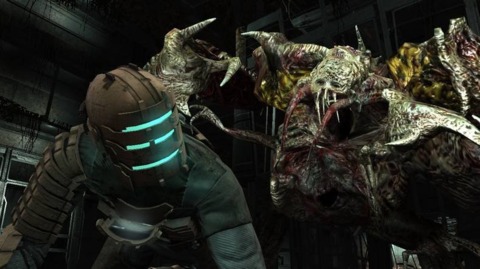GDC 2009: Reliving Dead Space
Senior producer Chuck Beaver explains why his team started development on the original Xbox, worked 18 months before being greenlit.
SAN FRANCISCO--The atmosphere of last year's survival horror hit Dead Space was designed to instill a sense of dread in players, keeping them on the edges of their seats for hours on end, wondering if every shadow concealed another variant of the game's unspeakable monsters. But that's nothing compared to the tension the development team endured.

In his 2009 Game Developers Conference presentation today, Electronic Arts Redwood Shores senior producer Chuck Beaver said that the studio worked on the game for 18 months before it finally received a green light from the publisher. Dead Space was one of the first projects in EA's renewed focus on original intellectual properties, and Beaver said the publisher at the time was committed to that focus, but not confident about executing on it.
EA's reluctance might have been understandable. Beaver noted that the Redwood Shores studio had been a factory for licensed games like The Godfather and The Simpsons for years. He said the last original IP created by Redwood Shores was 1991's motorcycle combat game Road Rash.
After the original pitch for Dead Space in early 2006, EA provided the team with three months to work on the project. Given that an original IP was a different sort of game for EA, the Dead Space team took a suitably different approach to development than is typical for the company.
Beaver said EA games typically spend a lengthy period of time in the design phase before anything playable is created. For Dead Space, Redwood Shores focused on "putting pixels on the screen" as soon as possible. That meant prototyping some of the gameplay mechanics before the team had an engine to work with.
Because work on Dead Space started before EA had a next-gen engine ready for use, the team started prototyping some of the basic gameplay on the original Xbox, figuring it would be easier to find out how well the mechanics worked in practice and go through the pain of converting it to a next-gen platform later.
Beaver showed an early demo from this build, which had already implemented some of the weapons and the zero-gravity gameplay. While rough, the prototype helped "immensely," Beaver said, adding that the process of making demos early and often in development allowed for many more iterative improvements than the standard EA practice would have.
That wasn't the only EA convention Redwood Shores thumbed its nose at to get the game greenlit. Beaver said they "staged an aggressive internal PR campaign," treating and developing the game as if it had already been given the final go-ahead.
However, the final push that helped get Dead Space approved after 18 months of development was a vertical slice--a demo incorporating all the major features of the game Beaver described as "a completely polished bite-size serving of the whole game." While it took the team a year and a half to create the level in the vertical slice, it prepared them well for the rest of the project. After getting the green light, the team cranked out the game's other 11 levels in just 10 months, Beaver said.
For more on the game, check out GameSpot's Dead Space review.
Got a news tip or want to contact us directly? Email news@gamespot.com
Join the conversation